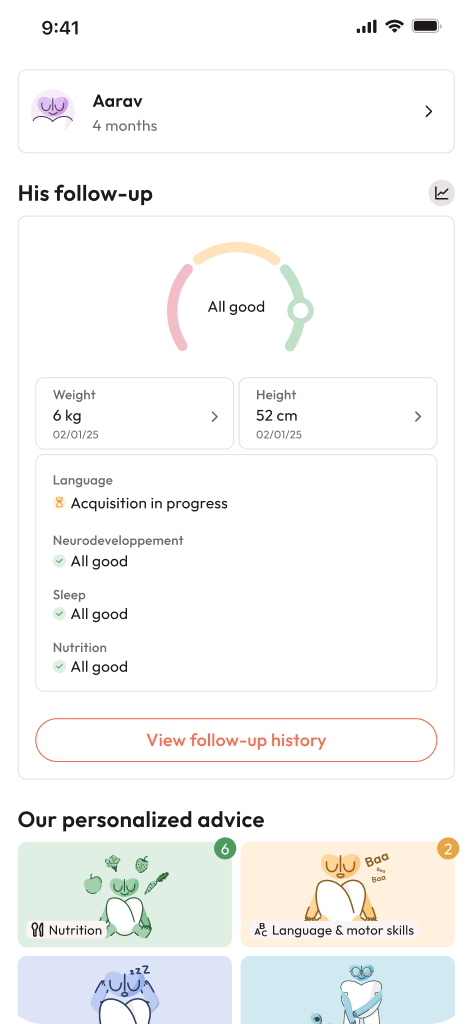Adjusting to work after the whirlwind of maternity leave—sleepless nights, nursing schedules, and the entire universe revolving around a tiny human—can feel like standing at the edge of a new world. Some parents wake up with an anxious flutter, others feel tugging guilt, a few experience unexpected relief, and almost everyone is faced with the exhausting puzzle of balancing responsibilities. What if the work wardrobe doesn’t quite fit like before? Will colleagues perceive you differently? The flood of questions is relentless. Back to work after maternity leave difficulties are not mere inconveniences; they are layered challenges affecting emotions, routines, career progression, and even financial stability. Curious about practical ways to navigate fatigue, shift your identity from “full-time parent” to “working parent,” and protect both mental health and legal rights? Let’s decode it section by section and see how you—and your child—can thrive through these transitions.
Emotional Shifts and Mental Well-Being
How does one describe the internal storm that follows the return to work after months of caring for a new baby? For many, postpartum mood fluctuations intensify, propelled by hormonal changes, lack of sleep, and relentless self-expectations. Terms like “mom guilt” and separation anxiety appear frequently in research, yet the truth is often more nuanced. Sadness and worry sit alongside moments of genuine relief—sometimes even joy for adult conversation and intellectual stimulation. These emotions, documented in countless studies on maternal psychology, are a recognized aspect of postpartum adaptation.
Is this dissonance a sign of weakness? Absolutely not. Rather, it is the expected interplay between oxytocin’s soothing effects and the dopamine dips that accompany change. While adjusting neurotransmitters often lead to emotional rollercoasters, recognizing and accepting these feelings can itself be therapeutic. Regular self-check-ins—a few minutes spent noting your mood or discussing your feelings with a trusted partner—can help track mental wellness. Sometimes, clinical intervention may be needed if symptoms such as persistent sadness, lack of interest, or intrusive thoughts persist for weeks; consult a psychiatrist or psychologist without hesitation.
Self-compassion is not a luxury here. Studies suggest practicing mindfulness, setting aside judgment, and even writing a small gratitude list at the end of the day can regulate stress hormones. Reach out for peer support—sharing your story with colleagues, tapping into employee assistance programmes, or joining online support groups can counteract the sense of isolation that many report in the back to work after maternity leave difficulties narrative.
Adapting Daily Routines and Coping with Fatigue
It’s one thing to plan a seamless transition back to the office. Living it, however, is an entirely different ball game. Fatigue extends far beyond the simple lack of sleep; it is an amalgamation of biological recovery, hormonal shifts, and unrelenting cognitive load from multitasking. When cortisol surges and circadian rhythms remain disrupted due to night feeds, mental fog and physical exhaustion become nearly unavoidable.
- Prioritising rest and nutrition, even if only in snippets, is a pillar for resilience. Quick power naps, balanced snacks with complex carbohydrates, and hydration rich in electrolytes (think coconut water rather than only plain water) boost energy and recovery.
- Gentle exercise—short walks, deep stretching, or basic yoga—encourages serotonin release, supporting both physical and emotional health.
- Practising new routines, trial runs of childcare drop-offs, or commuting before your official first day can smoothen logistical hiccups.
- Enlist support. Delegating household work (yes, even arranging for groceries online or requesting family help) relieves some of the cognitive burden, proven to reduce long-term burnout rates.
Understanding Legal Protections and Workplace Rights
Did you know that after returning from maternity leave, various legal frameworks offer a shield—preventing unjust dismissal and mandating reasonable accommodation? The intricacies may differ, but the remaining principles echo universally: lawful reinstatement, protection against discrimination, and entitlement to breastfeeding breaks rank high on the list of rights.
- Job reinstatement: Labour codes often mandate that returning employees either regain their old post or an equivalent one—matching prior pay and responsibilities. Attempts to sideline, demote, or cut pay can be red-flagged as employer misconduct.
- Protected period: Many regions enforce a “protected window,” barring termination for a specified tenure after resumption except for gross misconduct—offering renewed stability during this delicate phase.
- Breastfeeding and pumping rights: Employers are obliged to offer time and appropriate space for expressing milk, along with hygienic storage solutions.
- Recourse and action: If these rights are breached, document all interactions meticulously, and consider seeking legal counsel or guidance from employee representatives. Open dialogue with HR and management—sometimes, a candid conversation can resolve misunderstandings before legal escalation becomes necessary.
Reconnecting with Work: Colleagues, Technology, and New Workflows
A brief absence can sometimes mean returning to a world transformed—teams restructured, new management styles introduced, or technologies upgraded. This recalibration, although daunting at first, can foster professional growth.
- Use “keeping in touch” days if available—shadowing a day’s workflow without full involvement eases re-entry.
- Request updates on new policies, technologies, and team objectives.
- Honest check-ins with colleagues rebuild relationships; sharing your journey of back to work after maternity leave difficulties often encourages reciprocity and community.
Set manageable goals for the first few weeks. Celebrate incremental achievements; catching up is a process, not a sprint.
Facing Bias and Championing Workplace Inclusivity
Stigma—however subtle—remains a stubborn reality for many returning mothers and fathers alike. Perceptions of reduced commitment or reliability resurface despite scientific evidence debunking such myths. Documenting unfair treatment, regularly updating supervisors about achievements, and leaning into supportive coworkers creates both a record and a buffer.
Workplace education programmes focused on parental rights and structural bias can help establish a more equitable culture. HR’s openness, combined with leadership modelling flexibility—such as remote work or adapted hours—contributes to a supportive organisational climate.
Childcare Logistics and Financial Considerations
Securing dependable childcare is one of the most cited challenges in studies centred on back to work after maternity leave difficulties. Start your search early; high-quality providers often have long waitlists. Look for flexible arrangements, emergency plans (alternative caregivers, on-call relatives), and gradual adaptation periods for the child.
- Don’t neglect budgeting: With the surge in childcare costs, re-evaluate household finances. Investigate government or employer subsidies—these can sometimes tip the balance from stressful to manageable.
- Communication with your partner is key. Assigning roles, rotating duties, and routinely scheduling even small “parental check-ins” makes a tangible difference.
Maintaining Work-Life Balance
The aspiration for balance is a moving target—dynamic, context-specific, and deeply personal. Adopting fixed boundaries (no emails post-8pm, for example), using planners or checklists, and engaging in restorative activities such as reading or meditation provides structure amidst chaos.
- Persistent guilt? Medical experts suggest reframing: attending work not only provides financial security but models independence for your child.
- Delegate wherever possible, whether ordering groceries or shifting daily chores between partners.
- Acceptance is liberating: every family crafts its rhythm over time, and comparison is rarely productive.
Breastfeeding and Pumping Considerations at the Workplace
The act of expressing milk at work is entwined with both physiological needs and workplace policy. A designated, private, non-bathroom space, flexible scheduling of pumping breaks in alignment with your baby’s eating pattern, and reliable refrigeration form the triad of practical requirements. Open conversations with supervisors or human resources are encouraged—transparent requests can pave the way not just for you, but for future parents walking this same path.
Preparation is more than packing supplies. Map out your breaks, label stored milk, and seek out other breastfeeding employees for peer support. Research indicates that normalising such discussions decreases stigma and improves compliance with health recommendations.
Pursuing Career Development and Advancement
Fears about career stagnation or missed promotions after maternity leave linger long after the handover emails are sent. Regular feedback sessions, participation in upskilling workshops, or mentorship networks reinforce your value and drive long-term growth—even amidst the back to work after maternity leave difficulties.
Parenting hones diverse skills—time management, empathy, crisis resolution—that research directly links to leadership potential. Don’t hesitate to cite these in appraisals or professional development conversations.
Building a Supportive Workplace Culture
The importance of supportive management cannot be overstated. Empathetic managers, transparent HR policies, and accessible peer networks provide a safety net during transition. Robust parental leave, regular workshops on parental challenges and workplace bias, and active encouragement for open conversations on work-life balance promote true inclusion.
Lessons Shared: Real Stories, Real Solutions
Listening to voices on the ground paints a vivid picture. Many parents describe the return to work as “bittersweet,” marked by both the anticipation of personal growth and the ache of separation. Recurrent themes: early planning for childcare, unwavering commitment to boundaries, and the profound relief offered by robust support systems. Those who faced greater difficulties—rigid schedules, limited leave, or mental health challenges—frequently highlight communication, both at home and at the office, as essential for resilience.
Key Takeaways
- Back to work after maternity leave difficulties encompass a spectrum of emotional, practical, and legal challenges—acknowledging these is the first step towards empowerment.
- Legal frameworks and employer obligations grant real protections; learn these well, document concerns, and act when necessary.
- Prioritise mental health—regular self-checks and, when needed, consulting a professional can be transformative.
- Reliable, flexible childcare arrangements and household routines smoothen daily transitions.
- Proactive workplace communication and boundary-setting benefit both families and careers.
- Parenting equips you with a unique skill set valuable in professional spheres.
- Support from networks—whether at work, online, or in the community—build resilience and ease adaptation.
- For personalised advice and free health questionnaires for children, download the application Heloa—resources to accompany you every step of the way.
Questions Parents Ask
How can I cope with feeling overwhelmed after returning to work?
Managing the initial rush of emotions is not easy. Start with small, actionable steps—organise your tasks for the day, and take regular breathing breaks. Share your thoughts with family or trusted colleagues. Even a short walk outdoors or listening to music during lunch can recharge your mood. Remember, seeking periodic rest supports both your productivity and emotional health.
What are some tips for managing work-life balance after maternity leave?
Draw clear boundaries—commit to fixed work hours, avoid late-night emails, and prioritise key family rituals like evening meals or playtime. Be open with your employer about flexibility or phased returns. Share household chores and childcare tasks with your partner. Each family discovers its balance gradually; don’t chase perfection.
What should I do if I’m struggling emotionally with leaving my baby?
Feeling sadness or apprehension when away from your baby is a universal experience. Reinforce rituals—like a special goodbye or video call during lunch—to maintain connection. Discuss your emotions with empathetic colleagues or join parent support communities. Should these emotions dominate daily life or hinder focus, consulting a mental health professional can provide valuable relief and perspective.









